Nagasaki is both a city and prefecture located on the western coast of Kyushu, the southernmost mainland island of Japan. The area has a bounty of both ocean coastline and mountains, boasting a slower pace of life and offering a variety of Nagasaki food specialties that draw people from all over Japan for a long weekend visit.
The prefecture also holds a very significant role in Japan’s international relations. Between the years of 1639 and 1853, Japan closed its borders to the world thus going into a long period of isolation. Despite that, Nagasaki was the only port that permitted foreign trade. Being open to foreign influence came a vast amount of culture and knowledge, and food from all over Asia and Europe flowed to Japan via Nagasaki, which contributed considerably to the rapid modernization of Japan.
Even so, when it comes to cuisine, the Nagasaki food scene has a plethora of traditional, regional cuisines that have remained popular favorites of its people as well as Japanese dishes with an international spin.
Here are a handful of crowd Nagasaki food favorites to put on your list to try when you visit.
Table of Contents
A Nagasaki Food Favorite: Nagasaki Champon
Perhaps the most well-known and recommended regional dish is Nagasaki Champon, a noodle dish made up of pork, seafood and veggies with a soup base of chicken and pork bones, and thick champon noodles.
On par with the seasonality of Japanese dishes, the ingredients can differ based on the time of year, the restaurant itself, and where you are in the prefecture too.
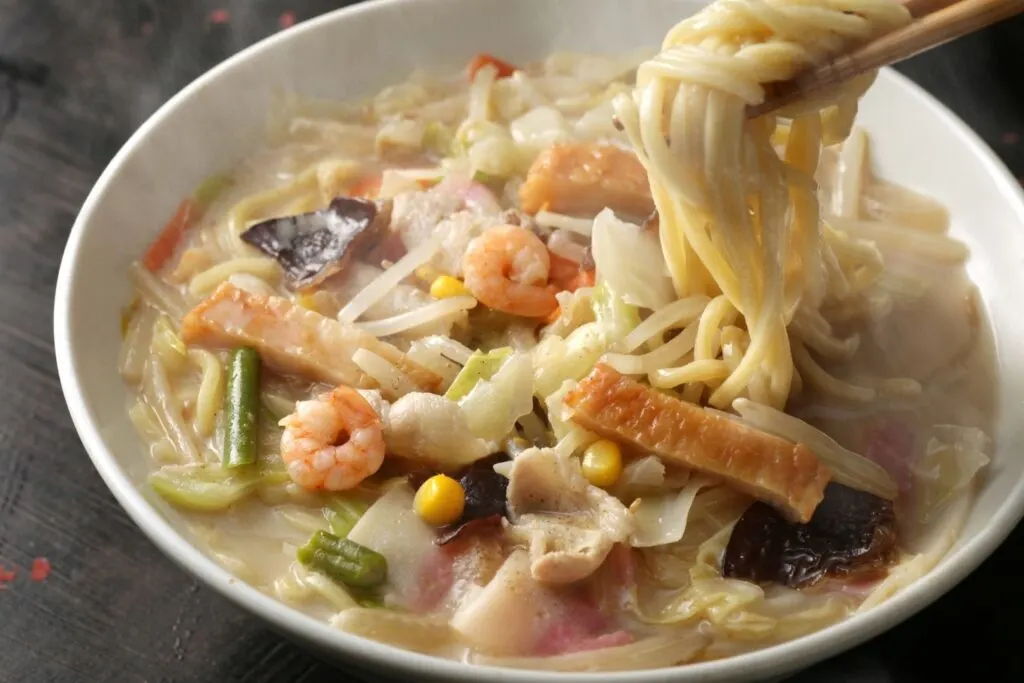
Sara Udon
Sara Udon is another noodle dish native to the region and can often be found on the menu alongside Nagasaki Champon. It consists of noodles and is topped with stir-fried cabbage, bean sprouts, and other vegetables. Depending on where you go, it may also be accompanied by squid, shrimp, or pork.
Despite its name, the dish doesn’t actually use udon noodles. Instead, it uses crispier noodles that have been fried in oil. A different spin on this dish uses Champon-style ramen-esque noodles.
Because Sara Udon and Nagasaki Champon are so widely known and served in the region, they are often the cheapest, most delicious dishes to try, and many restaurants can and do often change them up with different combinations of veggies and meats.
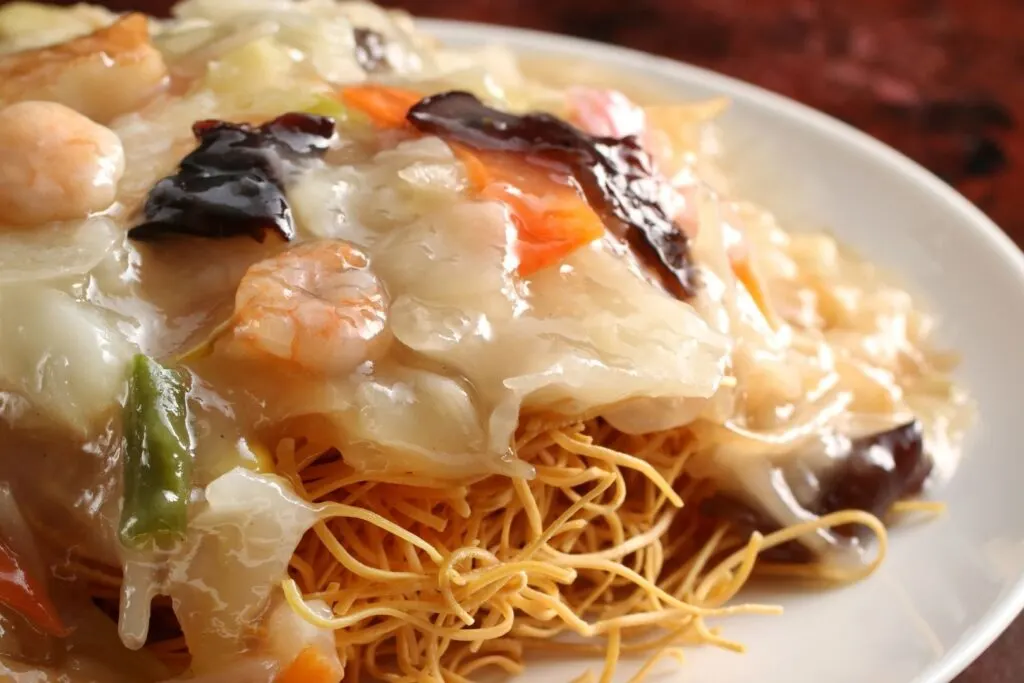
Shippoku ryori
Think of shippoku ryori as more of a big-picture meal to be eaten in community with others rather than an individual dish. The meal centers around a large variety of food platters shared around the table.
The menu typically consists of soup, baked seafood, a medley of tofu with vegetables, rice, and a traditional Japanese dessert. Nowadays, shippoku ryori is a common meal served in traditional, luxury Japanese restaurants.
Guzoni
Guzoni (guzōni) is one of several traditional dishes eaten over the New Year’s holiday in Japan.
Zoni is a soup that contains veggies like daikon radish, bean curd, and mushrooms, as well as meat, and mochi (chewy, Japanese rice cakes). Guzoni is the Nagasaki version of this soup that is widely eaten all over the country on New Year’s Day. You can however find it in Shimabara City, where the dish originated, all-year-round.
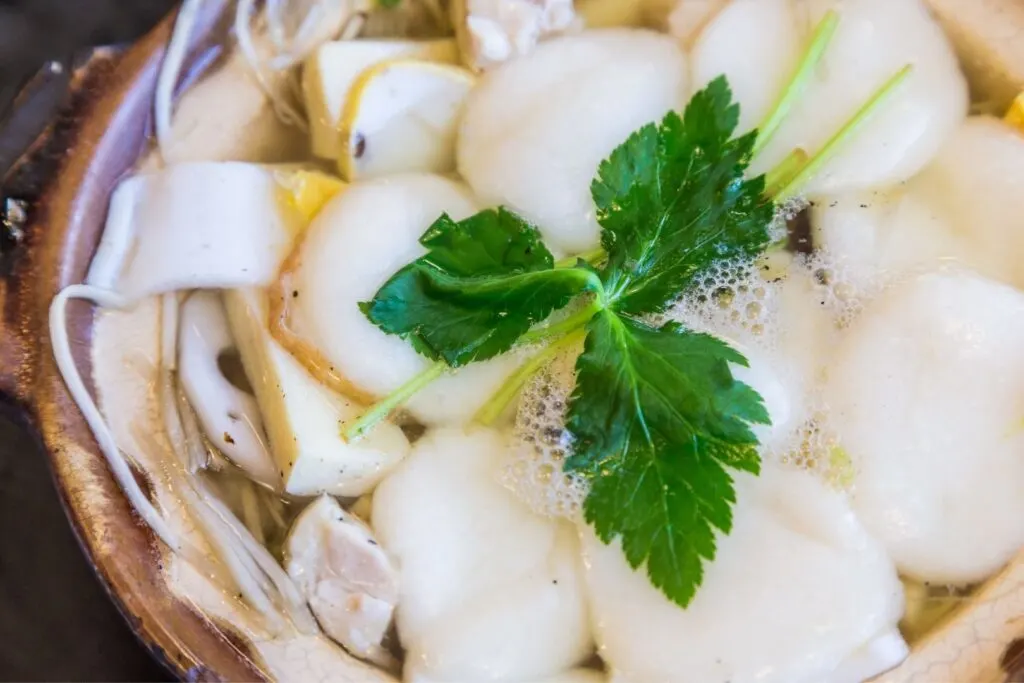
Goto Udon
Nagasaki encompasses 594 smaller islands as part of the prefecture. Goto Island has gained popularity over the years and is best known for Goto Udon.
The noodles are said to be the most unique for their firm but springy texture because they are stretched by hand through a special process that elongates the noodles, twisted, set to rest, cut, kneaded, and thinned. All by hand.
The noodles have earned their name and recognition because they are made with ingredients specifically harvested from Goto Island such as flour, spring water, camellia oil, and salt from the surrounding waters. No preservatives are used in the noodles. Instead, camellia oil is used to preserve the noodle’s shape and texture while boiling.
Omura Zushi
No, that’s not a misspelling. Omura Zushi is a special type of sushi from the city of Omura, approximately 45 minutes by train to Nagasaki.
It’s a layered sushi that is pressed together in a shallow wooden box then cut into smaller squares. It uses vinegared rice, shiitake mushrooms, seasoned carrots, gourd, and the signature ingredient, hanpen kamaboko, a steamed fish paste that has been brightly colored pink and green.
Other ingredients that often make an appearance are bamboo shoots, burdock root, lotus root, and flaked sea bream. The sushi itself is packed with nutrients. While you can find it in many restaurants and supermarkets, Omura Zushi is usually reserved for celebrations or for special guests.
Touba
Touba is a case where Nagasaki put their own spin on an international dish. Touba is a type of Chinese pork belly that has been stewed until it is extremely tender, tinged in sweetness and has quite a gelatinous consistency.
Some say it has an almost creamy, melt-in-your-mouth taste and texture to it. While not native to the region, don’t pass on trying this mighty delicious dish.
Castella
When you visit Nagasaki, finish off your main meal with a slice of castella. This cake was first introduced by Portuguese missionaries but was adapted due to the lack of dairy and sugar in Japan, and therefore is often categorized as wagashi (traditional Japanese sweets made of plant-based ingredients). However, it also falls under the category of nanbangashi, referring to European confectionaries introduced to Japan via trade around the 16th Century.
Today it is the quintessential omiyage (souvenir) to purchase for friends and family when you’ve visited the region. Bakers use rectangular molds that give the castella its perfect shape and they use a type of sugar syrup called mizuame which gives it a moist texture. It’s comparable to pound cake in America.
You can find individual portions in most convenience stores or sharing sizes in train stations or shops that specialize in making this cake.
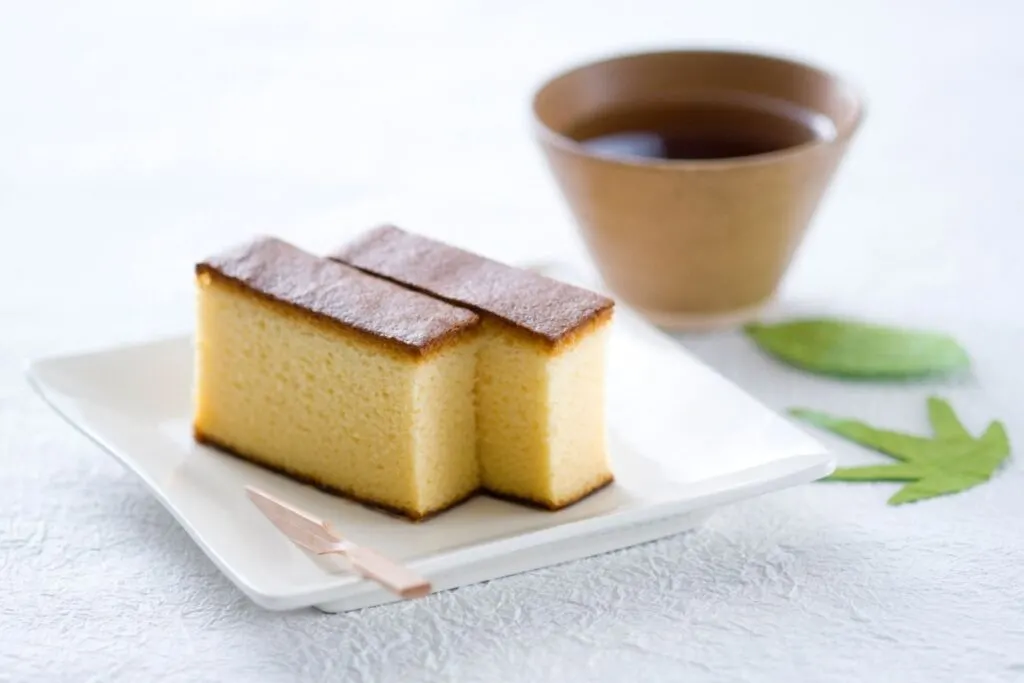
Which Nagasaki food would you most like to try?
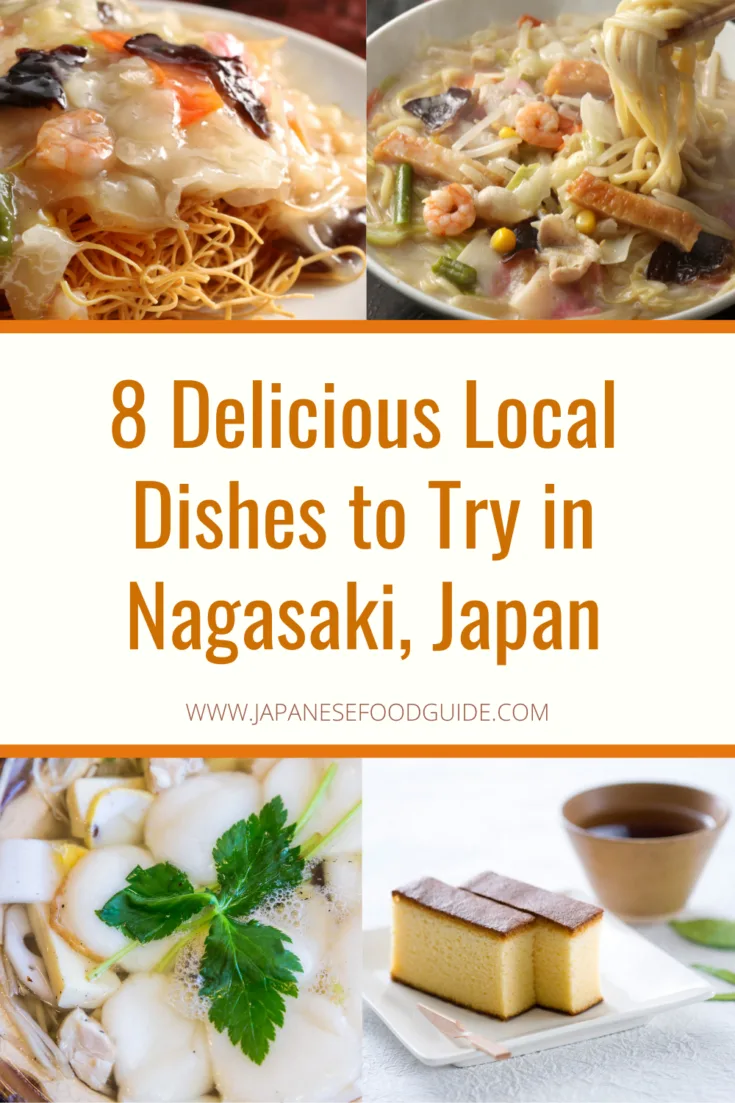
Currently, she lives in Michigan and is transitioning into a career in UX Design.
